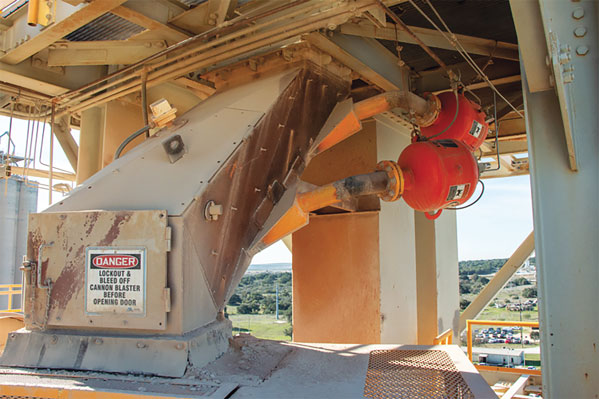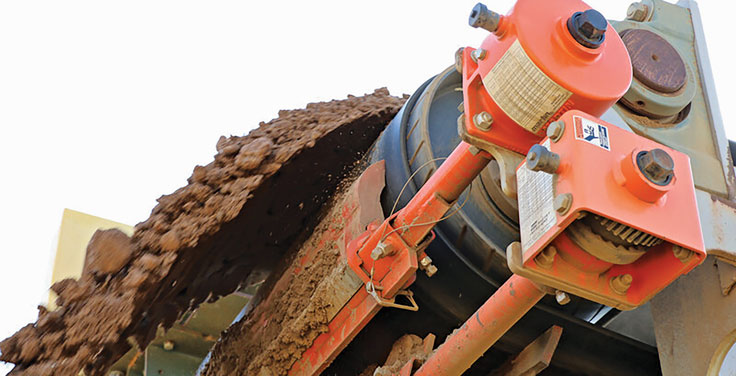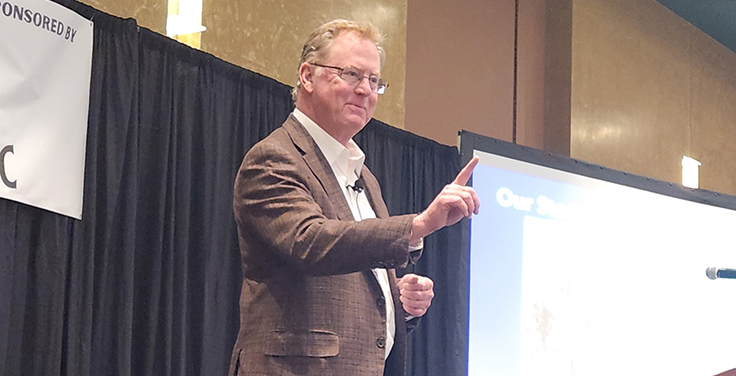
Emissions at the discharge zone can be found billowing out of the chute against the direction of the cargo stream or exiting the sides and bottom as it loosens from the belt’s return side.
Dust has become a highly regulated workplace and environmental concern that can lead to stiff fines and forced downtime if high volumes of respirable crystalline silica are detected.
Dust emissions returning from the chute can derive from uncontrolled airflow at the exit point. The emissions can also be caused by hitting rock boxes meant to slow the flow of material, as well as by an unobstructed impact causing turbulence.
Dust from carryback can permeate the area and spread emissions down the entire length of the belt return. If the belt reaches into a tower or is exposed to the outdoors, this causes dust to be carried long distances on air currents into nearby communities – leading to possible violations.
Studies have shown that dust can be controlled by adequate cleaning at the discharge using cleaners. Also, by reconfiguring the chute’s exit into a sloping scoop, material can be slowed and loaded onto the next belt in a controlled and centered manner with less turbulence. Air cannons installed along the chute are pointed with the material stream and can help direct air flow.
Conclusion
Modern bulk handling industries are changing and growing every day. Demand for raw and processed materials for construction and manufacturing continue to rise. Production increases can change throughput volumes and belt speeds, which have a direct effect on spillage, carryback, clogging and dust.
Retroactively installing equipment that improves safety and efficiency should be a priority of every operator. Although the initial capital investment might be higher, the return on investment and the resulting benefits are not just fewer injuries, but reduced labor costs for maintenance, fewer equipment replacements, greater compliance and an overall lower cost of operation.
Daniel Marshall is process engineer at Martin Engineering.












